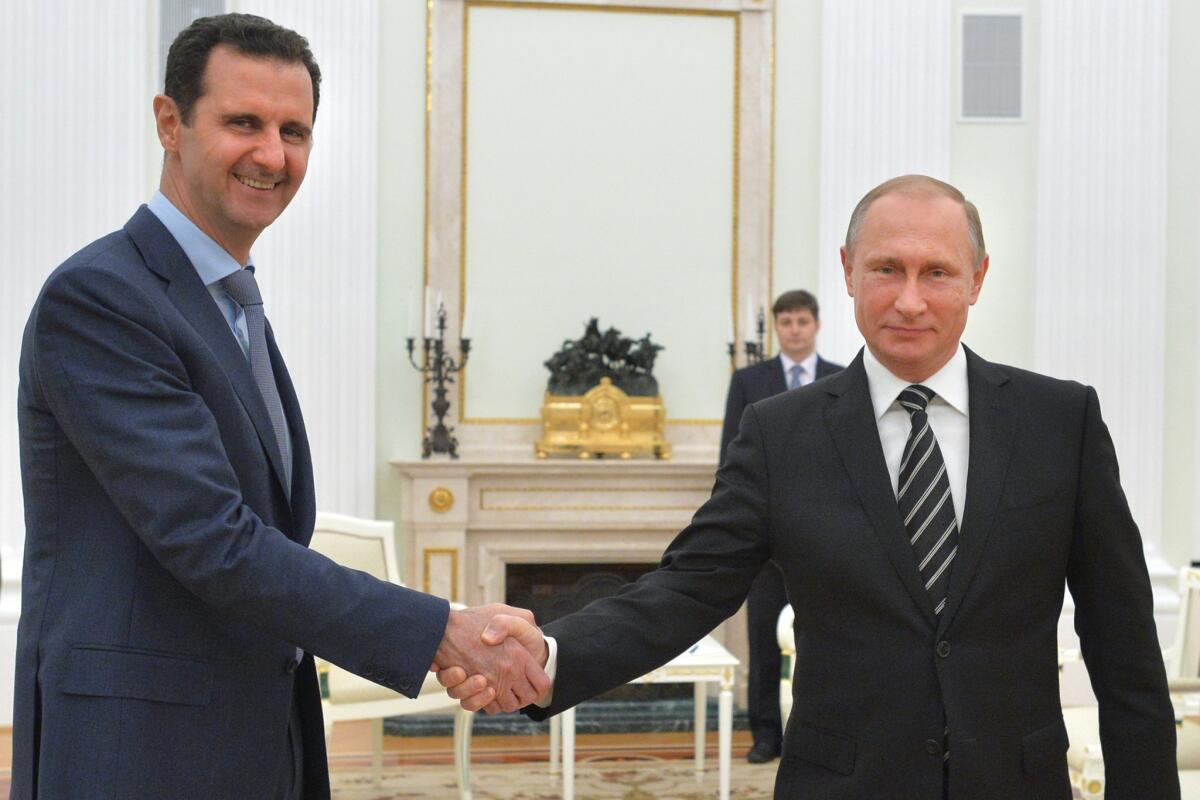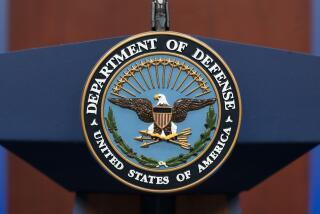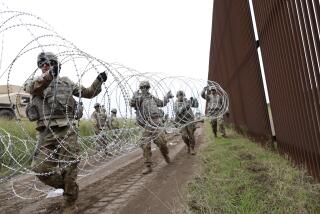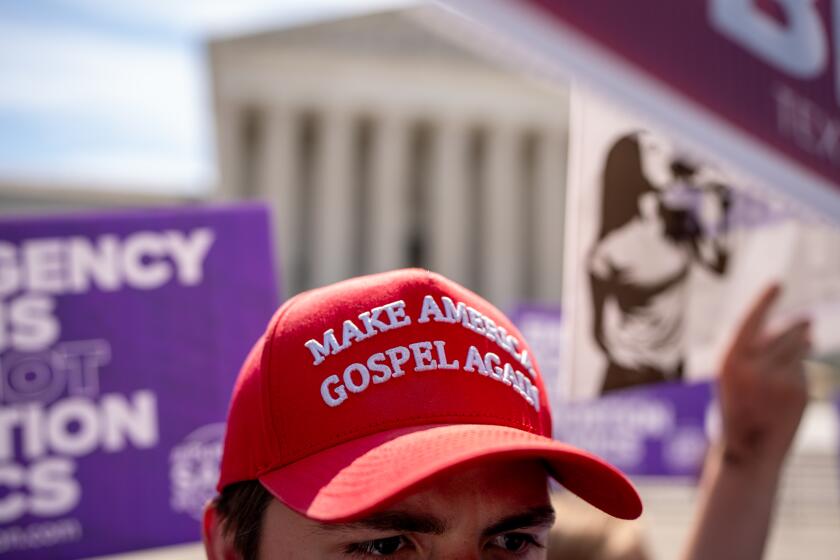Column: Obama tries a Band-Aid for Syria

Syrian President Bashar Assad shakes hands with Vladimir Putin in Moscow on Oct. 21. Since the Russian aerial campaign began Sept. 30, loyalist forces have gone on the offensive, winning back territory.
When President Obama decided last week to send several dozen U.S. troops into Syria as advisors, the outcry was quick from both sides. Democrats fretted that by breaking his promise of no boots on the ground, Obama was inching toward deeper intervention. Republicans charged that Obama was intervening too little and accused him of acting without a strategy.
Neither criticism is fair. Obama does have a strategy in Syria, but it’s a strategy that isn’t working very well and is seemingly designed to infuriate both hawks and doves.
Here’s what Obama actually decided: He approved a Pentagon proposal to send “less than 50” troops into northern Syria to take a firsthand look at the Kurdish and Arab forces the United States wants to support there.
There’s reason to doubt this strategy will succeed... This will be at least the fourth U.S. attempt to train and equip a viable Syrian opposition army.
The initial detachment is supposed to stay on the ground less than 60 days and report back. They’re not going to engage in combat. They’re not going to accompany local forces on combat missions. They’re not even going to call in U.S. airstrikes.
What they’re mostly going to do, Pentagon officials say, is meet with opposition groups, determine what kind of U.S. aid they need and try to get them to coordinate their operations.
Just as noteworthy is the list of proposals Obama turned down. He did not approve a Pentagon plan to impose a no-fly zone to protect civilians from the forces of Syrian President Bashar Assad, or a separate proposal to set up a “safe zone” for refugees inside Syria’s northern border.
Moreover, the rebels the U.S. wants to help are being groomed only for the fight against Islamic State, not Assad. “It is not a decision to enter into Syria’s civil war,” Secretary of State John F. Kerry said. “It is focused exclusively on Daesh,” he added, using an Arabic acronym for Islamic State.
So if this is a step onto that mythical slippery slope that leads to total war, it’s a small and very hesitant one. “It’s a Band-Aid,” said Frederic Hof, a former State Department official who has worked with Syrian rebels. “It’s not a game-changer.”
The main reason Obama abandoned his promise of no boots on the ground, some officials say privately, is that his war against Islamic State was at an impasse.
The U.S. strategy for defeating Islamic State calls for U.S. and allied forces to bombard the militants from the air while local forces fight on land. That has worked in some Kurdish areas, where well-organized militias have pushed Islamic State out of their villages. But the next step in Syria was to move against the Islamic State capital of Raqqah, and Raqqah is a Sunni Arab town. The Arab forces the U.S. wants to work with are small, fragmented and untested — hence the demand for advisors.
There’s reason to doubt this strategy will succeed, in large part because we’ve tried it before. This will be at least the fourth U.S. attempt to train and equip a viable Syrian opposition army.
And even if it works, its impact is likely to be limited. Nobody expects the not-yet-organized Army of Raqqah to change the course of Syria’s civil war, or even, in the short run, to take back its hometown. The immediate goal, officials say, is merely to put more pressure on Islamic State.
Over time, the campaign could also help cement Syria’s de facto partition into at least four zones: one controlled by Assad’s Russian-backed government, one by the U.S.-backed Kurds and their allies, one by Islamic State, plus a patchwork of others.
And in the long run, officials say, the hope is that all sides except Islamic State will conclude that the war has reached a stalemate and enter serious negotiations.
But that time does not appear near. Although a new round of talks has been scheduled, neither Assad nor the opposition has offered any sign of conciliation.
Obama’s strategy comes with no promise of victory, and only one guarantee: Nobody will be happy with it, including Obama.
One of his closest aides, Ben Rhodes, was asked this week if the president was satisfied with any part of his policy in the Middle East. “We don’t have 150,000 troops there,” Rhodes replied.
Twitter: @doylemcmanus
Follow the Opinion section on Twitter @latimesopinion and Facebook
More to Read
A cure for the common opinion
Get thought-provoking perspectives with our weekly newsletter.
You may occasionally receive promotional content from the Los Angeles Times.











